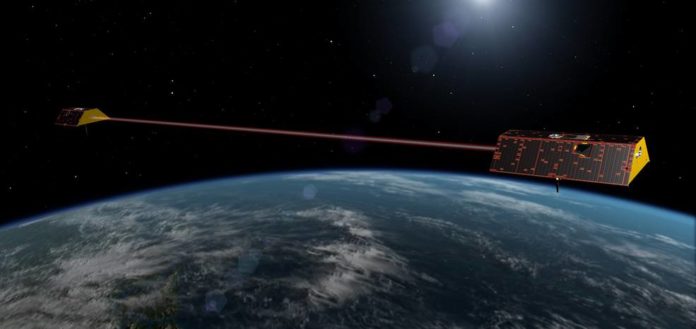NASA is all set to launch a new pair of spacecraft to observe our planet’s ever-changing water cycle, ice sheets, and crust on Saturday, May 19. The spacecraft launching under the mission Gravity Recovery and Climate Experiment Follow-On (GRACE-FO) mission will take over where the first GRACE mission left off when it completed its 15-year mission in 2017.
The spacecraft will observe monthly changes in the distribution of mass within and among Earth’s atmosphere, oceans, land and ice sheets, as well as within the solid Earth itself. Additionally, it will provide insights into Earth’s climate change, Earth system processes and even the impacts of some human activities.
According to engineers, the spacecraft will benefit societies by improving water resource management.
The spacecraft originally used a technique that observes something that can’t be seen specifically from space. It utilizes the weight of water to gauge its development – even water covered up far underneath Earth’s surface. GRACE-FO will do this by absolutely estimating the adjustments in the state of Earth’s gravity field caused by the development of enormous measures of water, ice, and strong Earth.
GRACE-FO will broaden the GRACE information record an extra five years and grow its heritage of logical accomplishments. GRACE chronicled the continuous loss of mass from the Greenland and Antarctic ice sheets and mountain icy masses. That abundance of information shed light on the key procedures, short-term variability, and long-haul inclines that affect ocean level ascent, enhancing ocean level projections.
The estimates of total water storage on land derived from GRACE data, from groundwater changes in deep aquifers to changes in soil moisture and surface water, are giving water managers new instruments to quantify the effect of dry spells and screen and gauge surges.
Michael Watkins, GRACE-FO science lead and director of NASA’s Jet Propulsion Laboratory (JPL) in Pasadena, California said, “Water is critical to every aspect of life on Earth – for health, for agriculture, for maintaining our way of living. You can’t manage it well until you can measure it. GRACE-FO provides a unique way to measure water in many of its phases, allowing us to manage water resources more effectively.”
“When water is underground, it’s impossible to directly observe from space. There’s no picture you can take or radar you can bounce off the surface to measure changes in that deep water. But it has mass, and GRACE-FO is almost the only way we have of observing it on large scales. Similarly, tracking changes in the total mass of the polar ice sheets is also very difficult, but GRACE-FO essentially puts a ‘scale’ under them to track their changes over time.”
The pair of spacecraft will function as a single instrument. They will orbit Earth about 137 miles (220 kilometers) apart, at an initial altitude of about 305 miles (490 kilometers). Each satellite continually sends microwave signals to the other to accurately measure changes in the distance between them. As they fly over a massive Earth feature, such as a mountain range or underground aquifer, the gravitational pull of that feature tugs on the satellites, changing the distance separating them. By tracking changes in their separation distance with incredible accuracy – to less than the thickness of a human hair – the satellites are able to map these regional gravity changes.
A global positioning system receiver is used to track each spacecraft’s position relative to Earth’s surface, and onboard accelerometers record non-gravitational forces on the spacecraft, such as atmospheric drag and solar radiation. These data are combined to produce monthly maps of the regional changes in global gravity and corresponding near-surface mass variations, which primarily reflect changes in the distribution of water mass in Earth’s atmosphere, oceans, land and ice sheets.
Frank Flechtner, GFZ’s GRACE-FO project manager said, “The Laser Ranging Interferometer is an excellent example of a great partnership. I’m looking forward to analyzing these innovative inter-satellite ranging data and their impact on gravity field modeling.”
GRACE-FO will be launched into orbit with five Iridium NEXT communications satellites on a commercially procured SpaceX Falcon 9 rocket from Vandenberg Air Force Base in California. This unique “rideshare” launch will first deploy GRACE-FO, then the Falcon 9 second stage will continue to a higher orbit to deploy the Iridium satellites.
